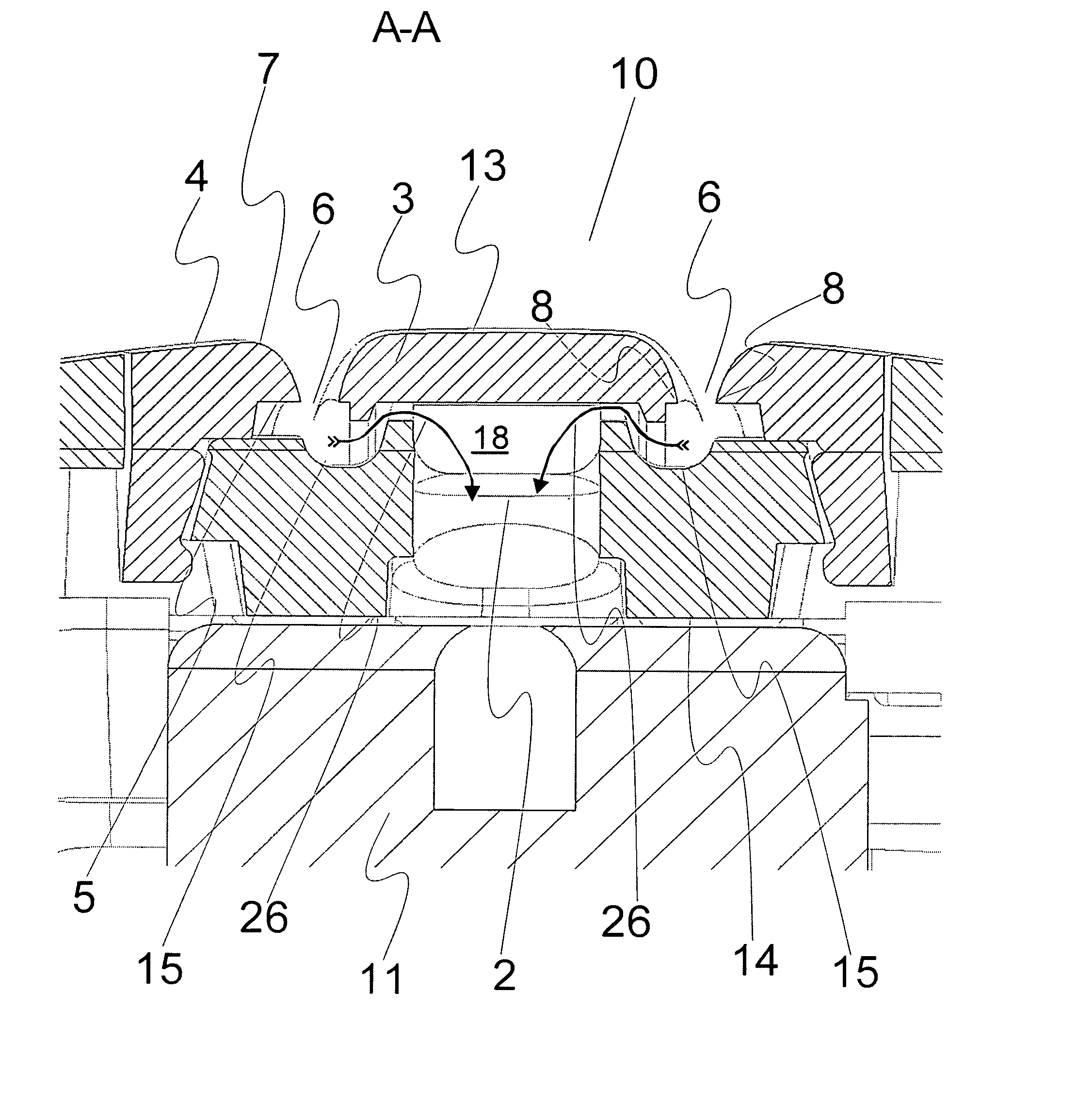Audio device comprising a microphone
a technology of audio devices and microphones, which is applied in the direction of transducer types, electrical devices, and hearing impaired stereophonic signal reproduction, etc., can solve the problems of mesh screens not keeping water out of the microphone opening, wind noise is still a major disturbance for people wearing hearing aids, and clogs are easy to occur, so as to improve the directional characteristics of the system, enhance the sound transparency of the protection screen, and protect the
- Summary
- Abstract
- Description
- Claims
- Application Information
AI Technical Summary
Benefits of technology
Problems solved by technology
Method used
Image
Examples
Embodiment Construction
[0020] In the exploded view of FIG. 5 the various parts of the audio device are shown. A generally triangular shell part 20 forms the basis of the device. A chassis 14 is shaped to fit into the shell 20 from a first side and a battery frame 21 fits into a second side of the shell part. The three parts: shell 20, chassis 14 and battery frame 21 are shaped to enclose the electronic parts of the audio device, namely microphones 1, 11 seen in FIGS. 1, 2 and 3 and a print (not shown) with an audio processing device and a battery. Further a socket 22 is provided for outputting an electric audio signal. A plug 23 fits the socket and leads inside a tube 24 are provided for powering an audio speaker 25. In use the audio device is placed behind a users ear, and the speaker 25 is placed inside the ear canal of the user to allow the user to hear enhanced versions of the sound received at the microphones 1,11. A windscreen 3 is further mountable on the chassis 14 to protect the sound entrances 2...
PUM
 Login to View More
Login to View More Abstract
Description
Claims
Application Information
 Login to View More
Login to View More - R&D
- Intellectual Property
- Life Sciences
- Materials
- Tech Scout
- Unparalleled Data Quality
- Higher Quality Content
- 60% Fewer Hallucinations
Browse by: Latest US Patents, China's latest patents, Technical Efficacy Thesaurus, Application Domain, Technology Topic, Popular Technical Reports.
© 2025 PatSnap. All rights reserved.Legal|Privacy policy|Modern Slavery Act Transparency Statement|Sitemap|About US| Contact US: help@patsnap.com



